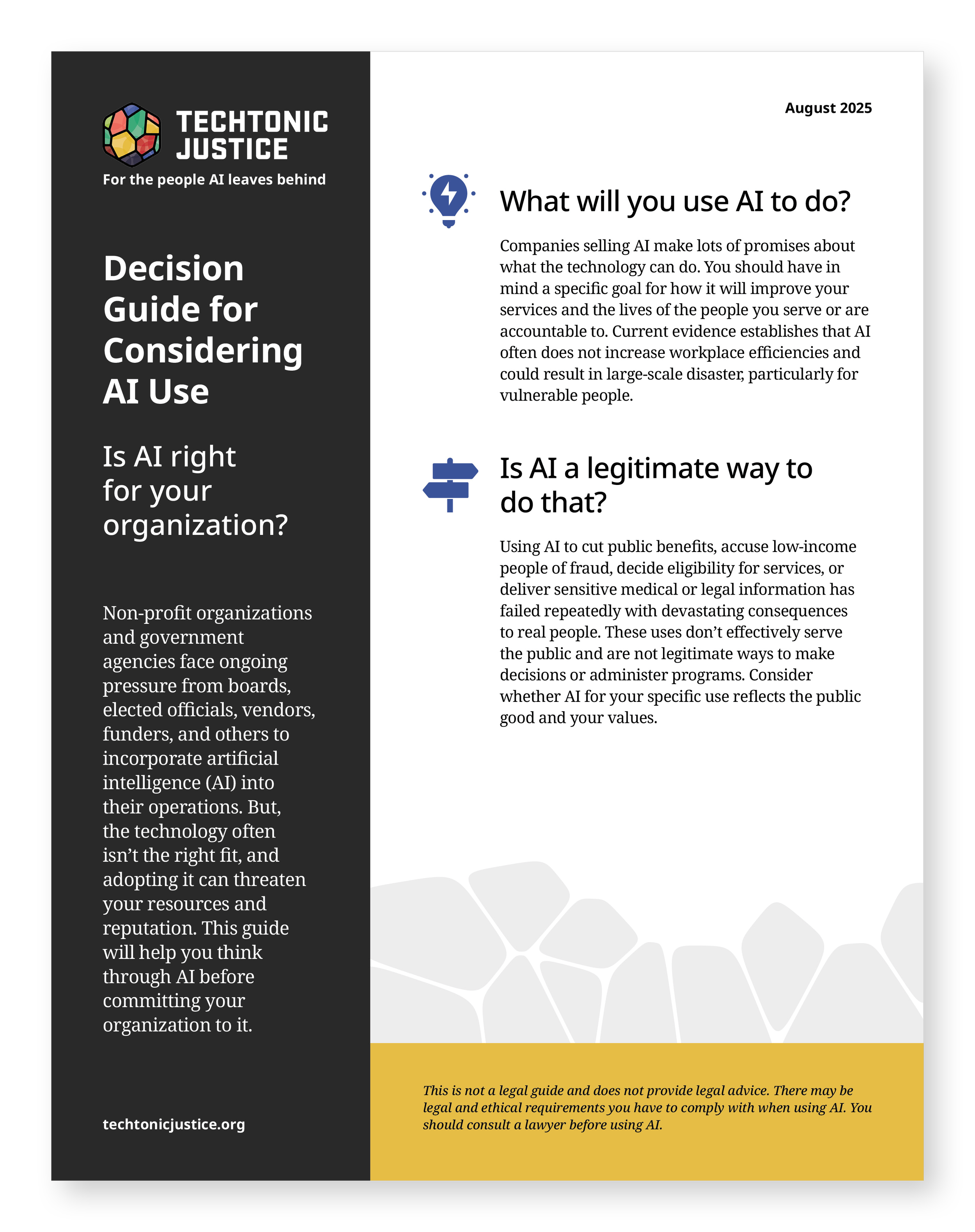Resources
Inescapable AI
The Ways AI Decides How Low-Income People Work, Live, Learn, and Survive
The use of artificial intelligence, or AI, by governments, landlords, employers, and other powerful private interests restricts the opportunities of low-income people in every basic aspect of life: at home, at work, in school, at government offices, and within families. AI technologies derive from a lineage of automation and algorithms that have been in use for decades with established patterns of harm to low-income communities. As such, now is a critical moment to take stock and correct course before AI of any level of technical sophistication becomes entrenched as a legitimate way to make key decisions about the people society marginalizes.
Employing a broad definition of AI, this report represents the first known effort to comprehensively explain and quantify the reach of AI-based decision-making among low-income people in the United States. It establishes that essentially all 92 million low-income people in the U.S. states—everyone whose income is less than 200 percent of the federal poverty line—have some basic aspect of their lives decided by AI.
Tips for Identifying AI Use
AI could be involved in all sorts of decisions made about you.
Most of the time, government officials, landlords, employers, educators, and others who use AI to make decisions don’t announce it. This guide is meant to help you figure out if AI is being used and what you can do about it.
Decision Guide for Considering AI Use
Is AI right for your organization?
Non-profit organizations and government agencies face ongoing pressure from boards, elected officials, vendors, funders, and others to incorporate artificial intelligence (AI) into their operations. But, the technology often isn’t the right fit, and adopting it can threaten your resources and reputation. This guide will help you think through AI before committing your organization to it.



